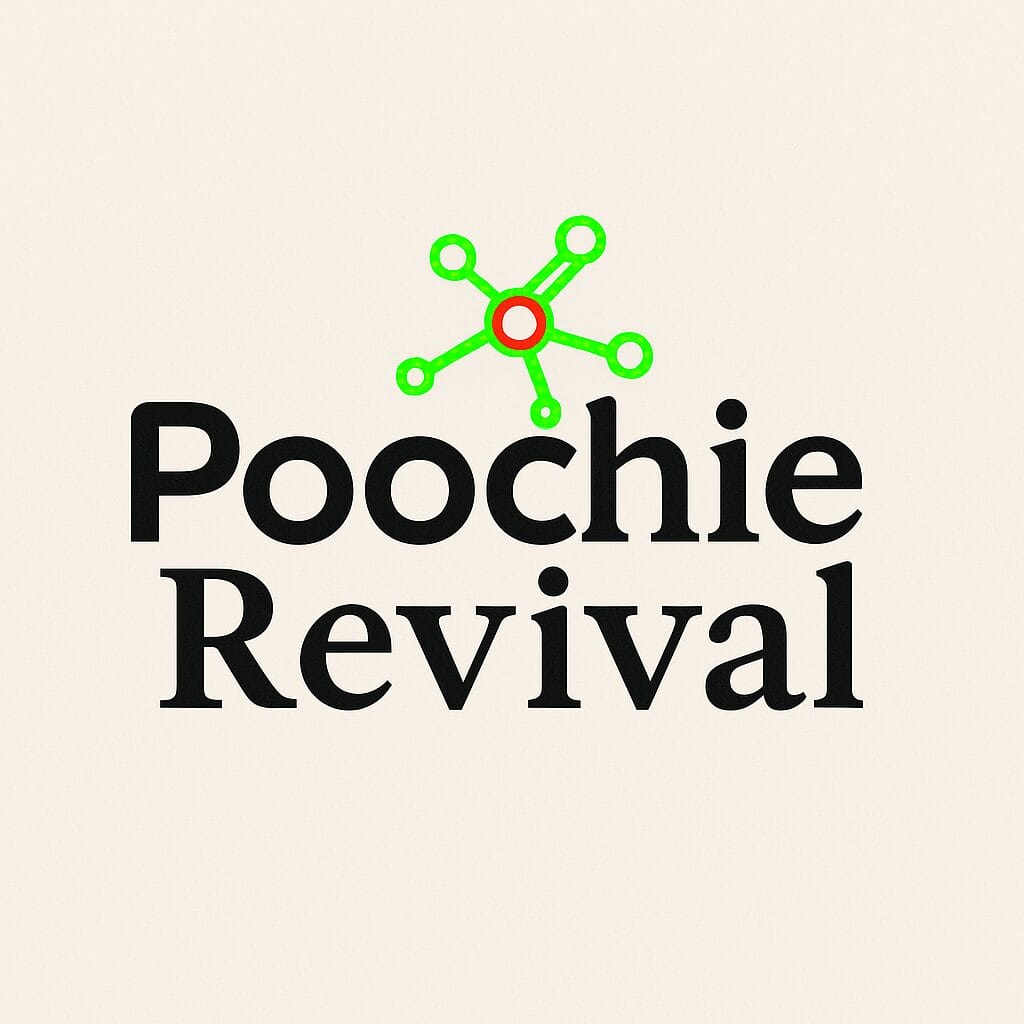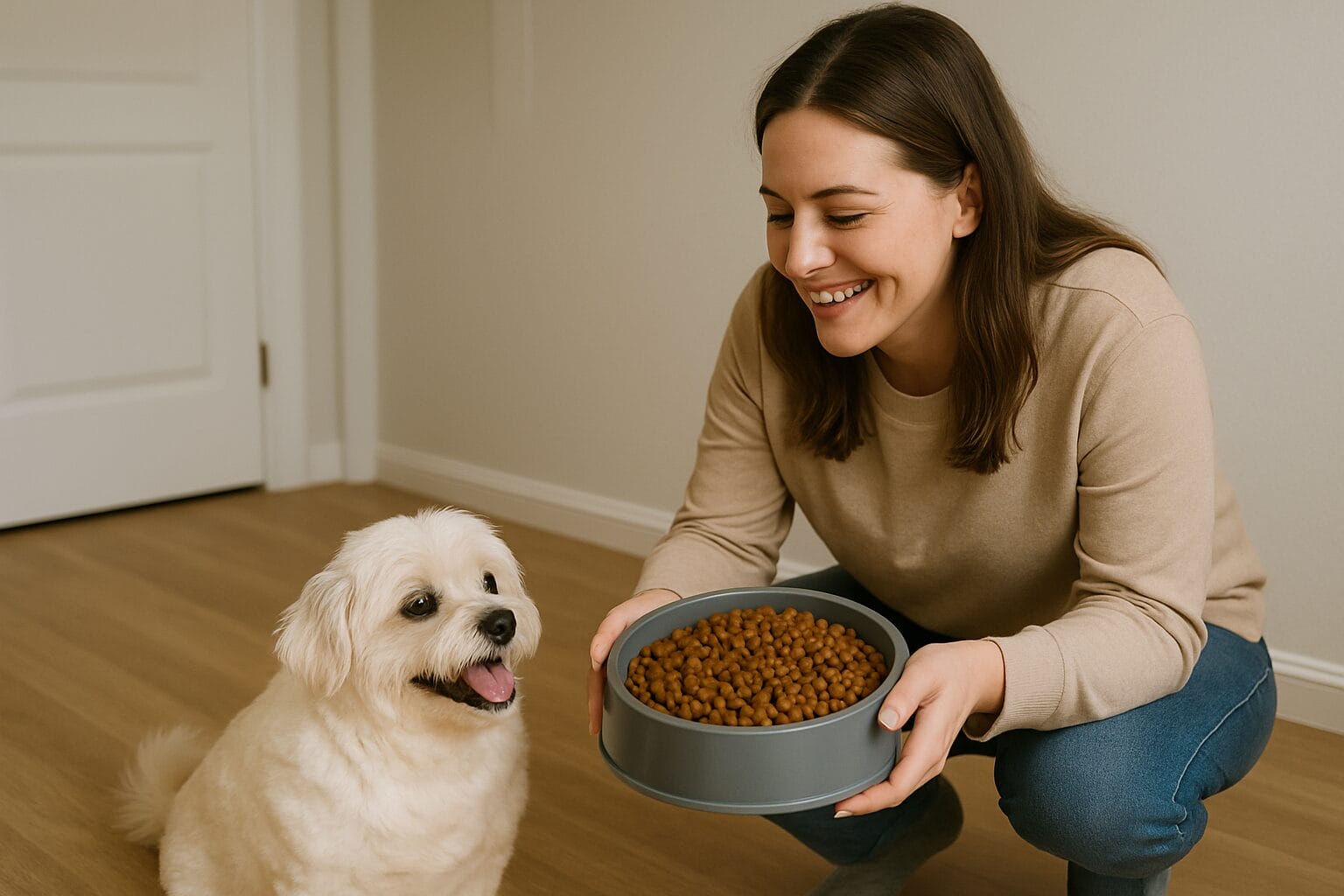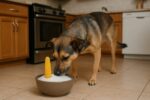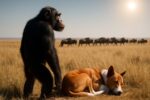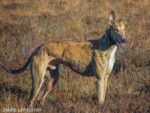The basic rule of weight loss is to eat less than you expend. For gaining weight, you eat more than you expend. Every adult knows this, even if their own beach body remains at the level of a walrus. When you start to increase the weight of a thin or lean dog, one general rule applies: fatten the dog with fat.
There is one and only one reason for this. Fat, and the food that contains it, is needed in smaller amounts because fat contains so many calories. Therefore, the amount of food does not become astronomical.
The reason why implementing the idea of fattening is often so difficult in practice is due to a few basic reasons.
- It is believed that the dog cannot eat larger portions
- There is a lack of understanding about how much a gram is
- There is a lack of understanding about how much a percentage is
There are a couple of other reasons, but they are more related to the inability to use fat at all. For example, heartburn or other health reasons, such as in the intestines. It doesn’t matter how many grams of fat should be given if the dog can’t eat them.
A dog’s pickiness is a whole different matter. If a dog is lean because it doesn’t have an appetite, then the pickiness is corrected first. If you are sure that it’s not a health issue, like heartburn, or anorexic behavior due to a lack of B vitamins, then you first create hunger. Only then do you start fattening.
The fact that aging dogs may not stay in shape and in good flesh with just meat is partly a digestive issue and partly due to metabolism. This is often easy to fix. Put the elderly dog on a 50/50 diet and start using some puppy food. Carbohydrates are needed in the mix.
Larger Portions
I don’t know where the idea comes from that a dog couldn’t eat a lot. I’ve heard it from people whose dogs have raided a bag of dry food. Or a small dog has eaten a Christmas ham the size of itself. At those times, no one doubted the dog’s ability to gorge. But when the spotlight is on the dog’s food bowl, skepticism arises.
With meat, a normal dog easily eats about 30 g/kg. And might beg for more. This would mean, in terms of dog sizes:
- 5 kg would eat 150 g (less than two deciliters)
- 15 kg would eat 450 g (slightly less than a typical roll)
- 30 kg would eat about a kilo (two rolls)
- 50 kg would eat 1.5 kg (three rolls)
These are not large amounts. They are normal amounts. Our Russell Terriers don’t yawn long over 300 grams.
When you start fattening a dog, the first move is to give the dog more food.
This can be done without tricks. There’s no need to go out and buy new food separately.
Increasing the amount of food doesn’t depend on the feeding style. It’s done in any case (unless the amount of food is already genuinely large for adults).
The Portion is Individual
We have a large greyhound female, maybe 30 – 32 kg (note, no longer competing; I don’t know precisely how much the dogs weigh) that couldn’t maintain her weight on Royal Canin Medium Puppy. The portion dry was a liter. I increased it to about 1.3 liters and the dog gained weight in a week. No special tricks were needed.
One Russell Terrier becomes a sausage roll with about a 2 dl portion of the same dry food, while another Russell Terrier keeps itself sporty with about 4 dl.
The point is that you cannot estimate the amount of food for a dog based on other dogs. Even less on others’ experiences. They can be used as guidelines if starting a completely new feeding and not knowing where to begin with the portion.
This truly applies to someone feeding their first dog. Or a very unsure owner whose problems focus on a lack of confidence. Otherwise, one could state that if I’ve given food X in a certain amount, then another brand is given less (if it’s stronger), more (if it’s weaker), or the same amount (if the fat percentage is the same). When switching to meat, it’s even easier – give twice as much as you used to give dry food.
A Dog Doesn’t Eat Percentages
In dog feeding, there is a significant focus on percentages. They are used to describe food. A bit like how people used to compare car engine liters and then deduced all sorts of things from them. Dog owners do the same, but with protein and fat percentages.
Some brands like Acana and Orijen are perceived as good foods for two reasons. Actually three, but let’s forget about the price’s impact on the concept of quality this time. They are holistic foods, and even if nothing else is known about holism other than it somehow relates to weeds herbs in food, it must be something good. The second reason is the high protein content. Because it’s higher than others, it must be better. The fact that it’s genuinely a bad thing and causes several health issues is another story.
The fat percentage indicates how strong the food is. Whether the dog gets a lot or a little from it. Many know it means energy. Nothing else.
I’ve encountered cases where a strong 30/20 food was bought for a dog because the dog would get more from it. And then it was given less because the dog gained weight. But it didn’t matter to the owner because the dog got more from it since it was strong.
Dry foods have roughly the same amounts of everything. The only things that vary are the amounts of protein and fat. Carbohydrates sometimes too, usually inversely proportional to the amount of fat; when fat increases, carbohydrates decrease, and vice versa. What the dog “gets” depends solely on how many grams it eats of the dry food. A dog eating 200 grams gets “everything” half as much as one eating 400 grams, regardless of the fat content.
So the example dog didn’t get more from the fattier food. It got less because it ate less of it.
This is something always to be remembered in one specific case:
- when reducing food to slim down a dog
The magical threshold where scarcity starts becoming a problem is 30 – 50% of the recommended portion – but there are food-specific differences there too because two similar foods might have different recommended portions.
With meat, it’s easier. Smart raw feeders read Katiska and know at least that meat represents practically only protein and fat in nutrition (if you don’t know why, check out this lecture). Those who believe meat is something greater and provides everything possible aren’t reading this either – so they don’t need to be considered.
With meat, the focus is primarily on the fat percentage. Largely because raw feeders know that meats have roughly the same protein percentage. It varies only for two reasons. Either due to poor quality or as a result of higher fat content.
Therefore, one might assume that those using meat would have the basic idea of slimming and fattening more firmly under control. They live with the amount of fat. The matter isn’t quite that simple. Often, the significance of grams is left unconsidered.
A Dog Eats Grams
Protein and fat amounts in foods are stated solely because the law requires it. If it weren’t mandatory information, it wouldn’t be provided.
Think about what happened with Royal Canin and calcium – the amount of calcium requires quite a magnifying glass to find. Royal Canin considers it secondary to know the amount of calcium in complete feeds. And since it’s no longer mandatory information, it’s not disclosed.
Neufrau attempts to hide the actual protein and fat amounts by stating them in Neus, MHB-Karp, and other products as dry matter when others in the industry state wet portions – overall, analysis data only came to Neus products when then-Evira forced it. Before that, a slap-on-the-wrist assurance was the only information the manufacturer deemed sufficient and necessary for both raw materials and analyses.
The fact that we have the right by law to receive at least the minimum information about feeds is a good thing. But it has also shifted the focus aside. We’ve been left staring at percentages without understanding what they mean in grams.
Finns aren’t particularly good at percentage calculations. Or at least that’s what is thought. A customer couldn’t calculate how much calcium a dog gets from 200 grams of food when it contained 1.2% calcium (these inquiries are regularly seen on Facebook). The same person had no problem understanding how much a dress priced at 49.95 cost at H&M when it was 35% off. It’s partly about willingness and somewhat about habit.
The answer to the calcium question is that when 1.2% is always the same amount in a hundred grams as a percentage, i.e., 1.2 grams, then in 200 grams, it is, of course, twice as much.
People also tend to think too circuitously. I certainly can’t cast the first stone on this topic. I always take the hardest path, like a third-wheel syndrome. That’s why the easiest, most obvious path isn’t seen in fattening.
I’ll use raw food as an example, but the same applies entirely to dry foods as well.
A Dog Fattened with Fat
We have a 28 kg dog that currently eats a 500-gram roll of meat with 14% fat. It needs to gain weight. It’s known that fattening a dog is done with fat.
Quite often, it’s done like this:
- buy lamb fat
- ask how much to give
Answers vary, and from these, the most suitable, preferably also correct, should be chosen:
- a tablespoon
- 25 grams
- 250 grams
- give enough
- give a teaspoon of fish oil
- buy Acana (or any dry food, change the brand as desired)
- give cottage cheese
- my dog got pancreatitis
- my dog can’t eat fat because it causes heartburn
- buy garlic-clover tablets
- book a vet appointment
Don’t get me wrong. I appreciate that people want to help. They do it because they care and want to share their experiences.
The problem is how to find help for oneself from that mishmash. If you exclude unrelated experiences (the respondent’s dog’s illnesses), complete uselessness (garlic, cottage cheese, and the vet), then the amount of lamb fat needed for fattening a dog is:
- 1 tbsp – enough
- change feeding
All of these are correct, each in its way. It’s nice that they include absolutely all possibilities. Choose any, and you’ll always hit the target.
At this point, the questioner is usually ready to give their lamb fat to the birds as winter food. But then I, Marika, and a couple of others step onto the stage. Professionals in action.
The advice focuses on:
- 1 tbsp – enough
- give fish oil
- give 20% fat
- change feeding
Again. Everyone is right, and none is. It’s about a few basic rules that every nutrition advisor should remember and that I regularly forget; others should answer for themselves.
- Use the questioner’s ingredients if they relate to the matter (e.g., provide glucosamine dosage when asked about MSM)
- Give a precise dosage or range
- Explain
- Provide one alternative if necessary
Additionally, there’s one basic rule: keep the solution simple! The more adjustments there are, or if measuring the amount of food requires a diamond scale, it certainly won’t be followed.
How Should It Have Been Answered
First, you must decide on the portion. You can calculate it if you trust Excel, or derive it from experience if you trust yourself. I always follow the latter in these types of situations.
The answer would be:
- Give the current food 1.5 rolls, i.e., 750 g. Add a generous tablespoon of lamb fat.
- If the dog likes it, you can give two rolls for a while. If food starts being left in the bowl, reduce the food. The goal is for the dog to lick the bowl clean but willingly go outside.
- The dog previously got 70 g of fat. It’s a bit low for that size. When the amount of food was increased, 105 g of fat is obtained. On top of that, there’s about 15 g of lamb fat.
- You can buy 20% fat pork and beef mix and give about 500 g per day. The dog would get the same amount of fat, but the amount of food is lower; it remains the same as before. Use up the lamb fat and then buy a large jar of salmon oil. It seems to stick to the sides a bit better, and you also get a bit of omega-3 fats. Not much, but a bit. If you feel like it, buy Lidl’s Greek yogurt. Dogs like its taste, and it provides some good milk proteins and a nice amount of fat.
(is this familiar to my customers?)
That’s it. The same can be achieved in many different ways, but certainly not more easily.
When advising to stick to the same food but increase the amount, two things are gained:
- the change in food doesn’t affect the dog
- the food’s fat percentage remains the same
Especially the latter is useful. Now the dog is being fattened with food that has 14% fat. It passes with everyone because the basic principle of percentage calculations isn’t understood: a percentage means nothing. It becomes useful only when calculated from something.
The entire long post focuses on one thesis:
Only change the food’s fat percentage if you can’t change the amount of food

